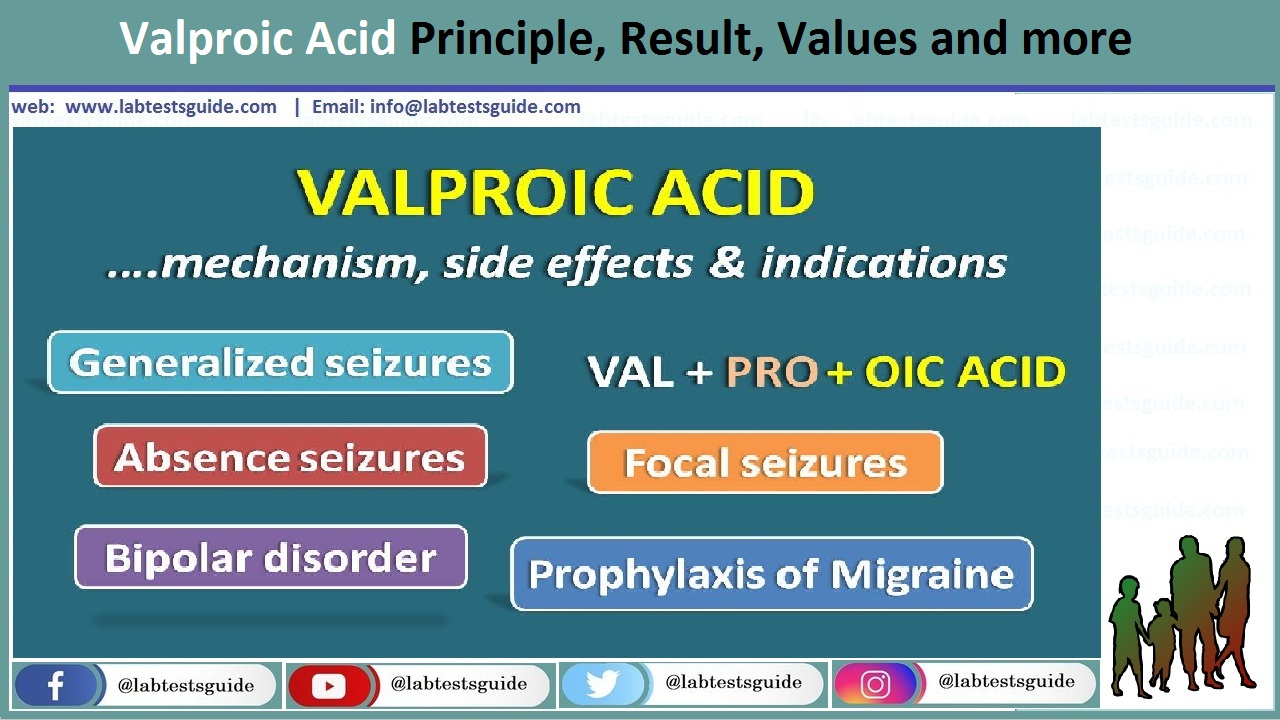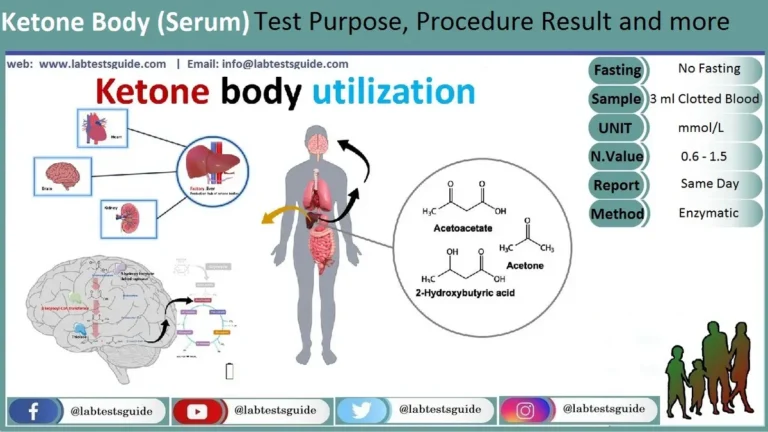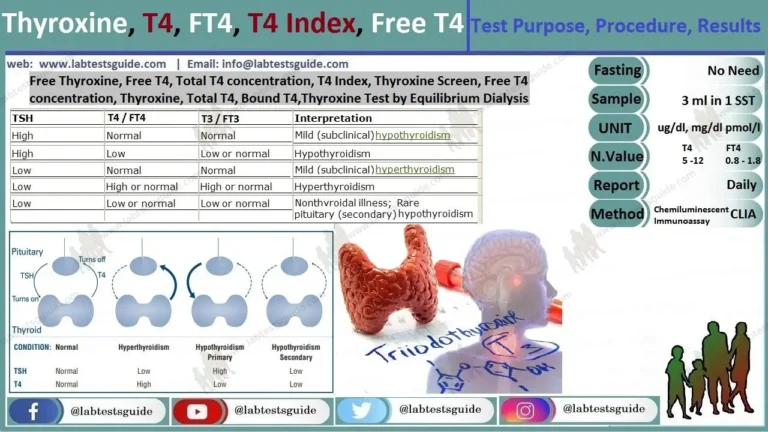A valproic acid test measures the amount of valproic acid, which is an anticonvulsant medicine, in a blood sample. Valproic acid is prescribed primarily to prevent seizures.

Also Known As: Valproate, Free Valproic Acid
Why Get Tested?
To determine the concentration of valproic acid in your blood; the purpose is to maintain a therapeutic level and monitor toxicity.
When To Get Tested?
At regular intervals to monitor the drug’s level or when a person shows signs of toxicity
Clinical Information
Valproic acid (valproate, Depakote, or Depakene) is an effective medication for absence seizures, generalized tonic-clonic seizures, and partial seizures, when administered alone or in conjunction with other antiepileptic agents.
The valproic acid that circulates in blood is 85% to 90% protein-bound under normal circumstances. In uremia or during concomitant therapy with other drugs that are highly protein-bound (such as phenytoin), valproic acid is displaced from protein, resulting in a higher free fraction of the drug circulating in blood.
Since neurologic activity and toxicity of valproic acid are directly related to the unbound fraction of drug, adjustment of dosage based on knowledge of the free valproic acid concentration may be useful in the following situations: concomitant use of highly protein-bound drugs (usually >80% bound), hypoalbuminemia, pregnancy, renal or hepatic failure, and in the elderly. In these situations, the total valproic acid concentration in the blood may underestimate the disproportionately higher free valproic acid fraction.
Sample Required:
- This is done on the serum of patients (mostly epileptics).
- The best time is before the second dose.
- The other best time is early in the morning.
Test Preparation Needed?
No special test preparation is needed, but talk to your healthcare practitioner about the timing of sample collection. Since dosage timing varies and some formulations are time-released, collection specifics may vary. Often, the recommended time for sample collection is just before the next dose is received, when the drug level is at its lowest (trough level). This ensures that the minimum amount of drug to be effective is maintained in the blood.
Purpose Of The Test (Indications)
- This is done on patients who are on Valproic acid drug treatment.
- This monitors the dose and prevents toxic levels.
- This is done in the patient with Epilepsy.
Normal Ranges:
- Therapeutic Level Is
- 50 to 120 µg/mL.
- Another source
- 50 to 120 µg/mL.
- > 200 µg/mL.
Another source 2
Toxic level = >100 µg/mL.
Possible References Used




